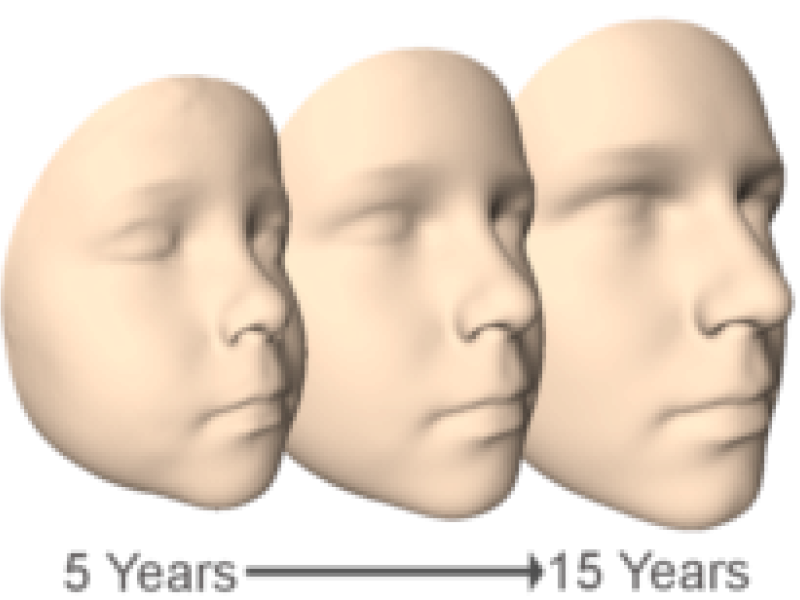Regarding the growth of children, the main sources of variability in facial shape are due to the factors sex and age. Knowledge about common shape configurations related to these factors helps pediatrists in early identification of distinctive facial appearance caused e.g. by developmental disorders like the Williams syndrome.
Using 3D measurement devices, limitations of common direct anthropometric measurements (e.g. distances taken with a caliper) to quantify facial shape can be overcome and potentially significant geometric features (angles, arbitrary euclidean and geodesic distances, volumes) can be assessed.
This project aims at establishing a 3D sample database of young faces in order to identify significant correlations between shape and both factors (sex and age). By establishing dense surface correspondence, a statistical shape model is built, which describes the shape variation found in the database by means of a few shape parameters. Based on this shape model, an average sex-dependend, non-linear growth model for the face of young children is computed.
